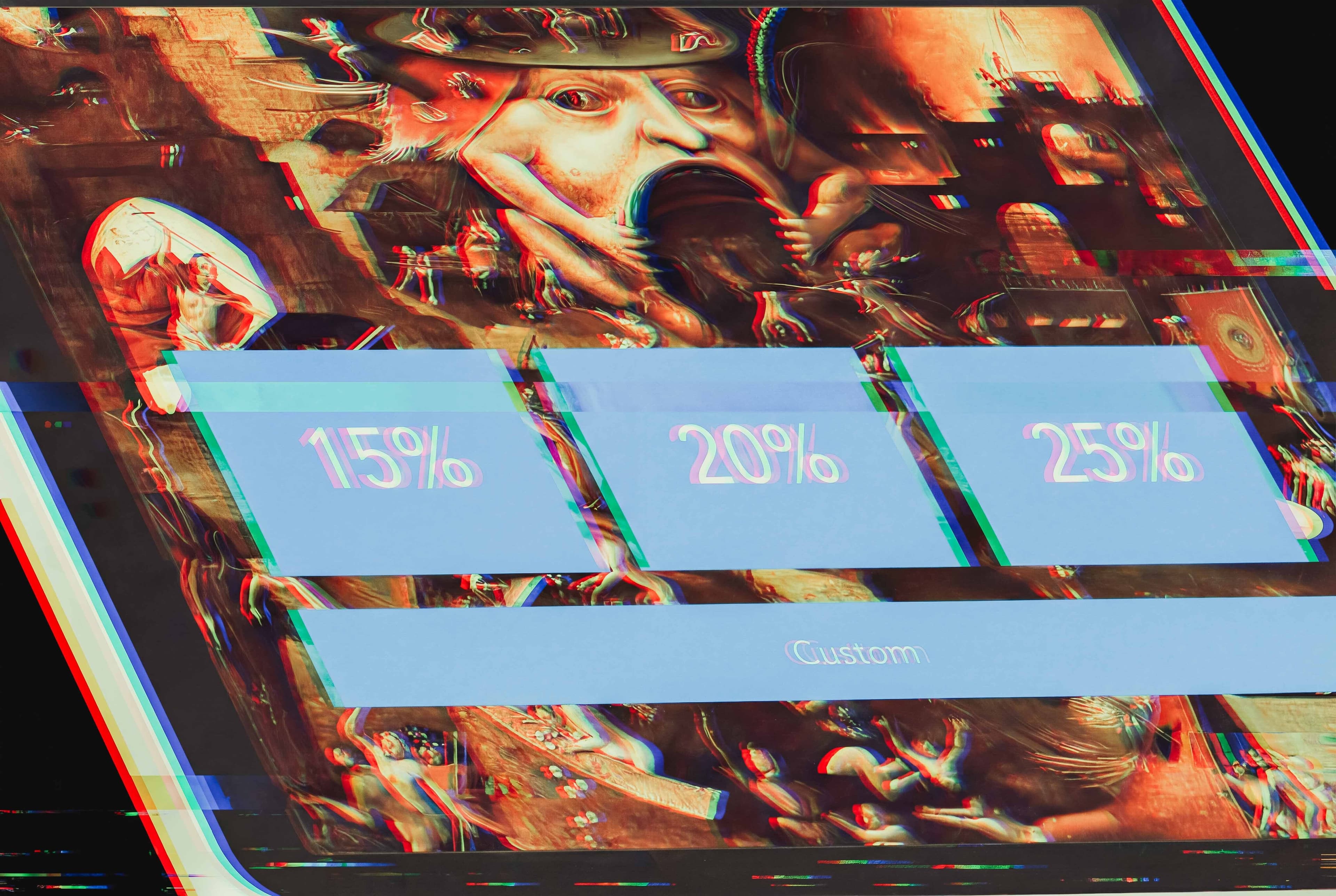
No, I'm Not Tipping YouJan 16
tipping culture has gone insane, and the ipads now ask for more money almost everywhere. how the hell did we get here and when will it stop?
Jan 10, 2023

The Singularity is Near(er (maybe)). Will it be a robot Heaven, or will it be a robot Hell? For over half a century, much has been made of the question, but increasingly it seems the answer is “neither.” Today’s artificial intelligence, while incredibly impressive, is nowhere near advanced enough to trigger accidental end game in any direction. Then, with no one in the field of artificial intelligence illustrating any kind of coherent plan for the technology beyond its development, it seems we’re approaching a world of massive disruption for no particular reason, and to no particular end. In other words, I’m now anticipating a future of neutral chaos, if a colorful and entertaining chaos.
In 2020, OpenAI released GPT-3, an eerily-smart chat bot capable of roughly predicting the back-and-forth flow of human speech. In other words, when you talked to the robot, it responded in a manner not entirely ridiculous. But the pace of advance was rapid. Two years later, androids were dreaming of electric sheep, capable of crafting entirely “new” essays with ChatGPT, and entirely “new” works of art with DALL-E, Midjourney, and Stable Diffusion. Millions of pieces were generated. A demon was possibly summoned. It was a whole thing, which I wrote about myself a few months back, and whatever, no big deal, you can’t make an omelet without occasionally opening a portal to Hell. It is what it is.
Presented with such powerful tools, technologists, public intellectuals, and policy makers have naturally begun to question the potential impact of generative technology. In the first place, over in the “really very bad” column, have we arrived at artificial general intelligence (AGI), and with it the harrowing dangers of “alignment,” in which a machine not properly trained might inadvertently turn us all into paperclips while attempting to follow orders and conserve energy (for example)? Here, famed rationalist Eliezer Yudkowsky — of the general opinion human survival is long-term impossible in light of machine learning advances, but we should at least die with dignity — uncharacteristically quelled concerns.